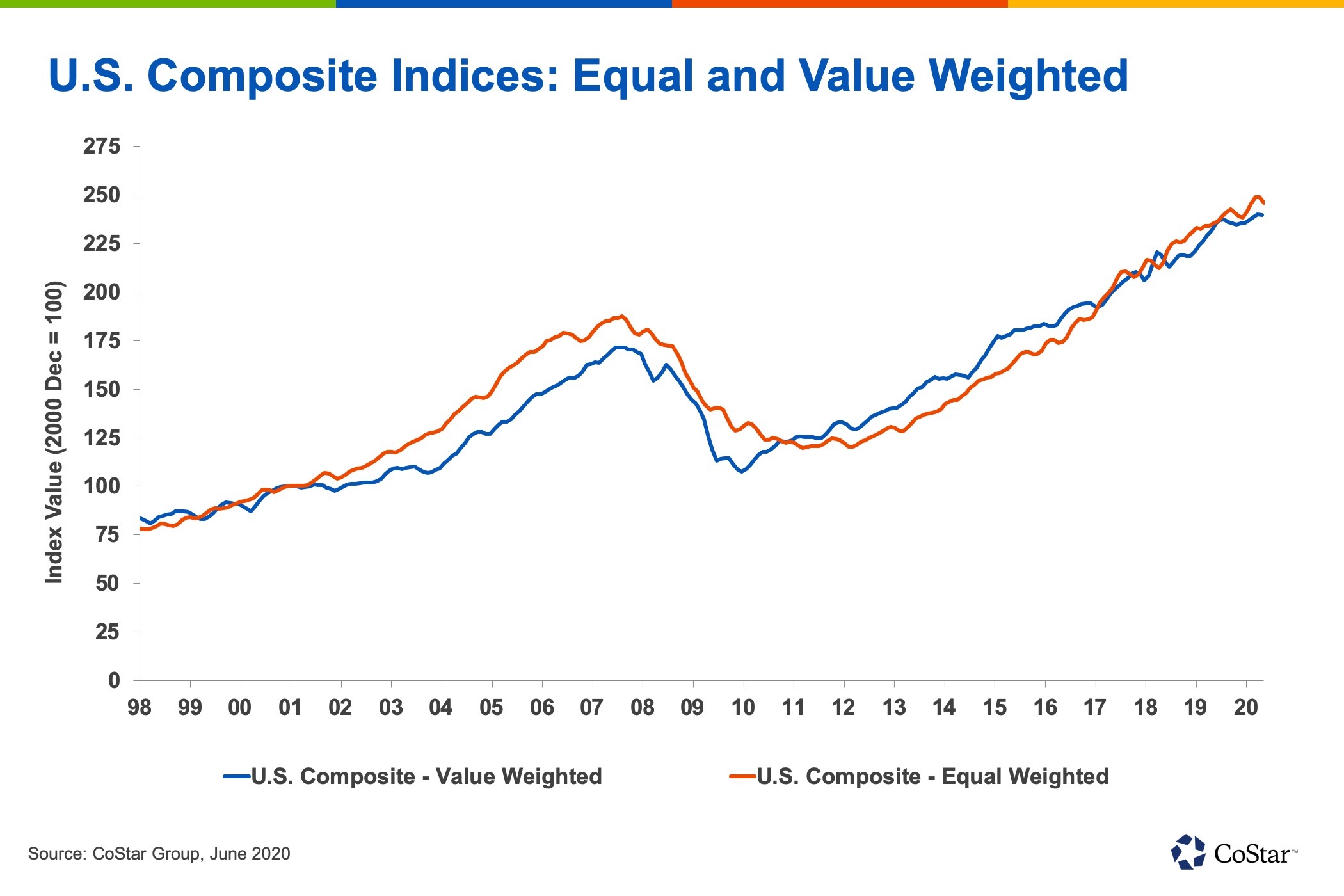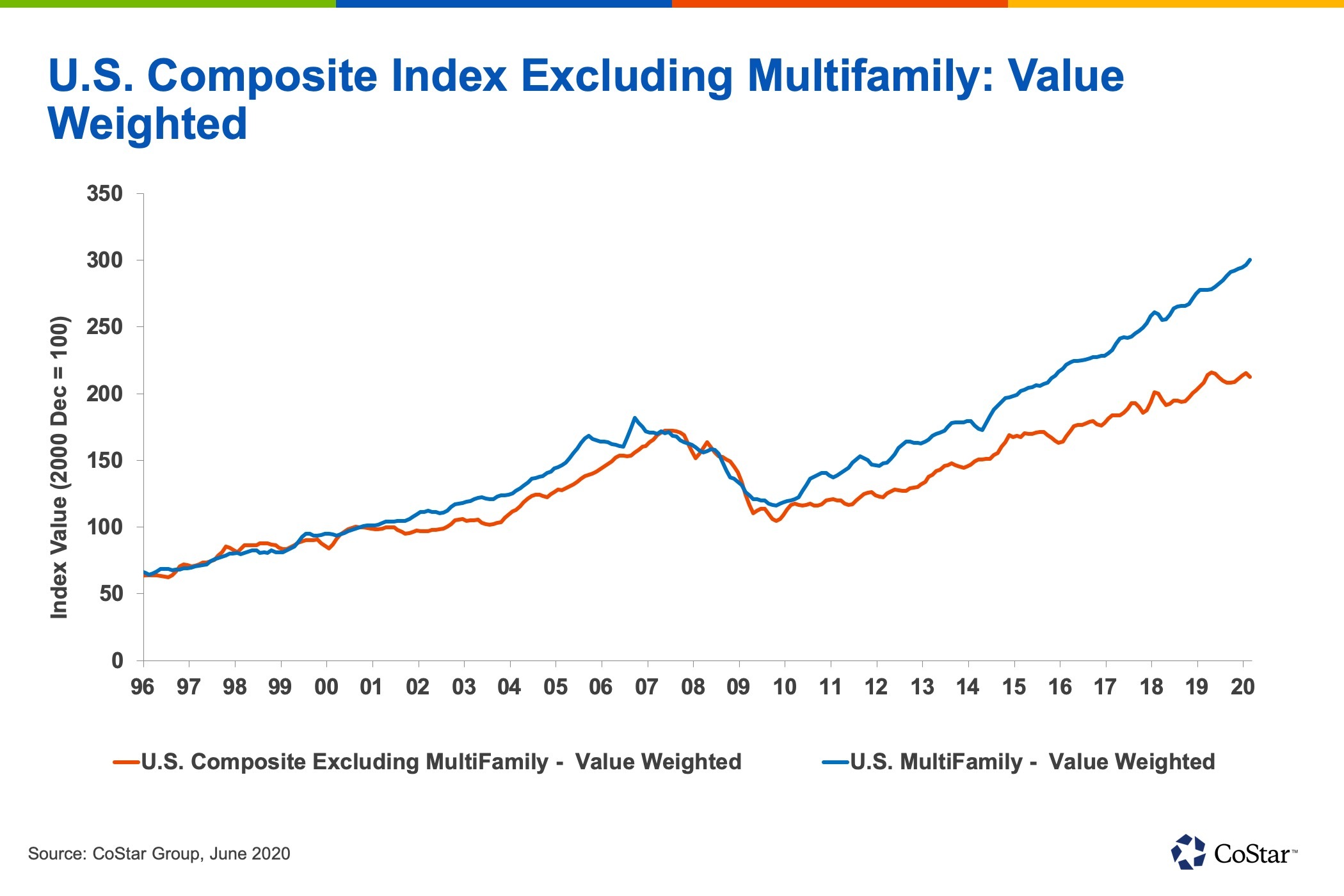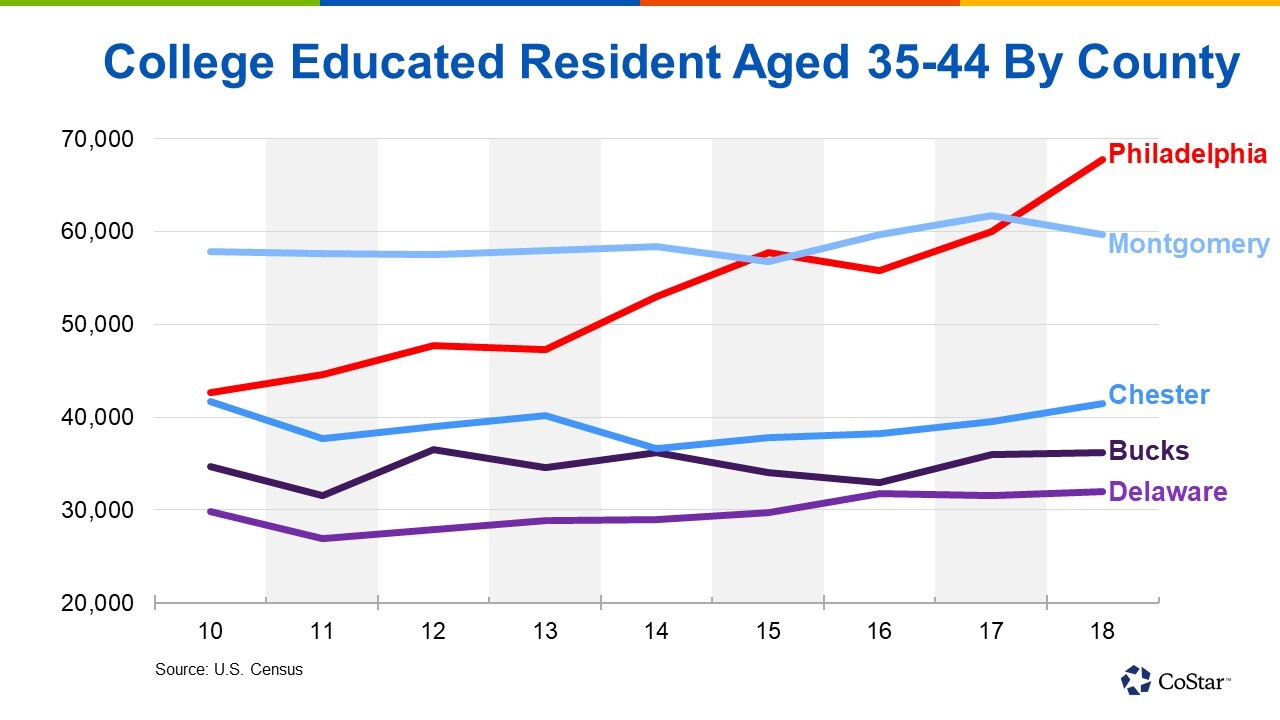By Adrian Ponsen CoStar Market Analytics
The coronavirus has thrust Greater Center City Philadelphia’s real estate market into turmoil. Few renters are looking to move at all given the current circumstances, and the rare ones who are on the move aren’t exactly flocking to smaller units in dense, urban areas.
Weary of forcing their employees back into crowded spaces, many major Market Street corporate tenants can barely get their offices back up and running. The finances of restaurants Philadelphians normally flock to are in tatters.
It’s tempting to think the long-term economic revival the city has experienced over the past two decades will reverse given these pressures. Here are three reasons why that likely won’t happen:
1. Recent Healthcare and Life Science Expansions Remain Concentrated in Philadelphia’s Urban Core
With more than 16 million Americans set to age past 70 in the coming decade, the healthcare and life sciences sectors are the Philadelphia area’s most promising economic drivers by a long shot. Their recent local expansions have also been highly concentrated in Philadelphia’s urban core.
Apart from some key deals signed at Discovery Labs in Montgomery County, nearly all the area’s recent leases signed by growing life sciences innovators, including Century Therapeutics, Spark Therapeutics and Wistar Institute, have been tied to properties in the Navy Yard or University City.
Philadelphia’s life sciences pioneers are gravitating to these more expensive urban locations because proximity to Philadelphia’s major universities, startup incubators, and hospitals is critical to their success.
The same applies to Philadelphia’s healthcare giants. Penn Medicine’s largest ever capital project, a 1.5 million-square-foot hospital, dubbed the Pavilion, is on track to complete construction in University City by early 2021. Jefferson Health recently received a $70 million donation, bringing it closer to groundbreaking on a 225,000-square-foot biomedical research facility at 9th Street and Locust Street, and also announced plans to build a 23-story ambulatory care center at 11th Street and Chestnut Street.
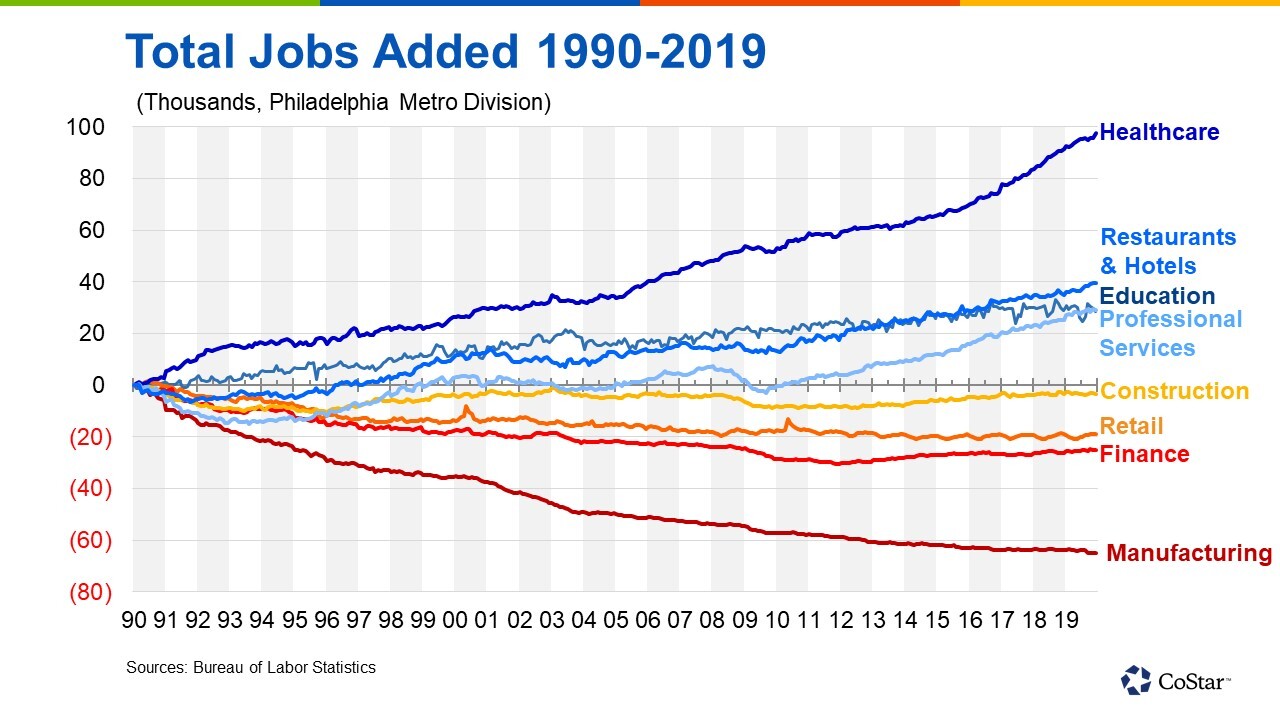
2. Millennials’ Preference for Urban Philadelphia Living is Not a Fad
America’s largest demographic cohort, the millennials, are fast aging into their early 30s. Many believe this will create and exodus from cities back to the suburbs, as growing numbers of middle-aged urban professionals have kids, demand more space and seek better-funded public schools.
In Philadelphia, the data does not support this thesis, at least not for college-educated millennials.
The NAHB has been surveying individuals born between 1980 and 1996 on their housing preferences for more than 10 years. Even as more of their survey respondents age well into their 30s, their preference for urban living has only grown dramatically.
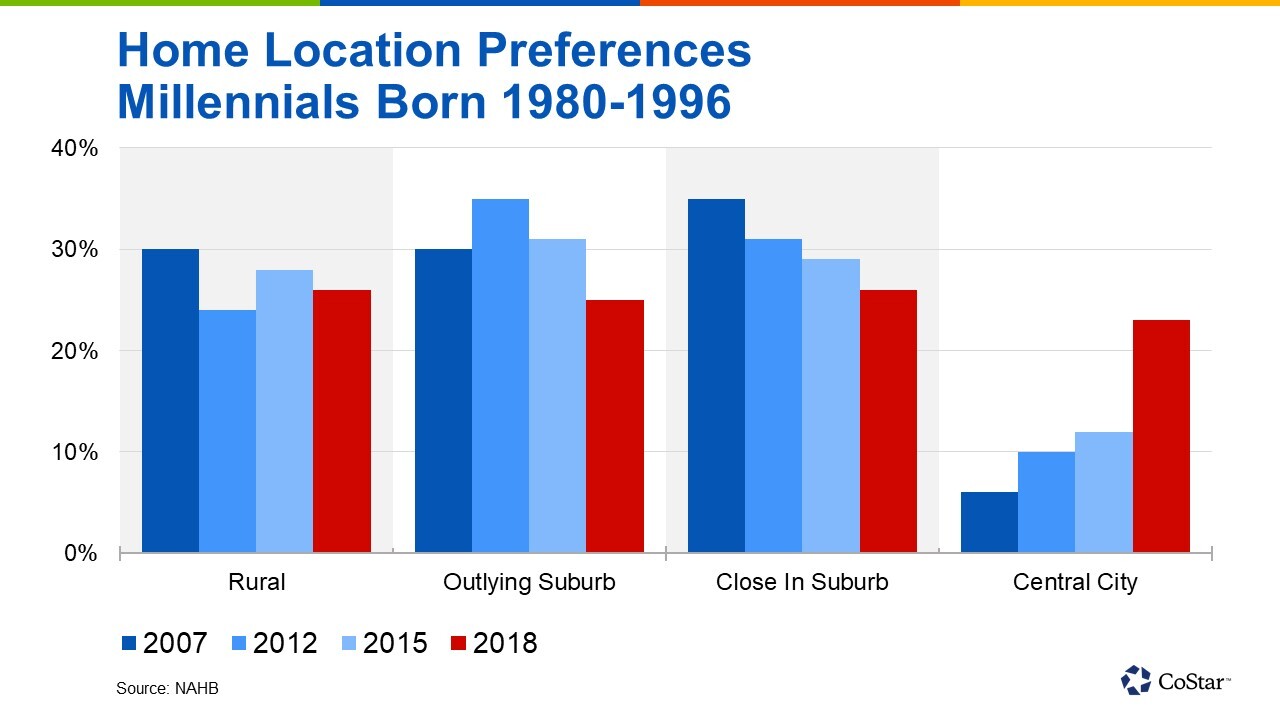
Meanwhile, Philadelphia is vastly more affordable than most large U.S. cities. The housing cost constraints that force other cities’ millennials into the suburbs are not as strong here. This has helped not only retain millennials from nearby suburbs, but also attracted larger numbers of them from more expensive cities nearby.
Growth in college-educated residents aged 18-34 has continued at a rapid pace in Philadelphia, while remaining relatively flat in most nearby suburban counties.
The city has even outperformed the suburbs in growth of college educated residents aged 35-44. This is a harbinger of future housing demand within city limits, and a clear sign that aging into the mid-30s doesn’t automatically prompt a move to the suburbs as some fear.
3. Emerging Shortages of Skilled Workers Will Pull Employers Into Central-Locations
With members of the massive baby boomer generation continuing to pass retirement age during the 2020s, America is on track for by far the slowest working age population growth in its modern history.

This will likely bring more intense skilled labor shortages and competition for knowledge workers, making it more and more critical for companies to locate close to universities and close to the neighborhoods where recent grads prefer to live, all to better compete at building internship pipelines and hiring young talent.
Skilled labor shortages should also incentivize companies to grow in locations that can source workers from the widest possible areas. In that environment, Center City’s vast public transit network, which pulls in commuters from across three states, could prove even more critical.
There’s no question that Center City’s economy and real estate markets are in for a rough patch over the next several months. The city’s sheer number of job losses, degraded tax revenues, and crippled hospitality industry present immense challenges. But Philadelphia’s long-term re-urbanization of wealth is not likely to reverse over the next decade. There are too many powerful forces pushing in the opposite direction.
